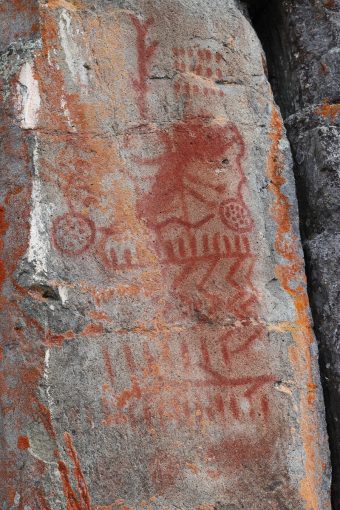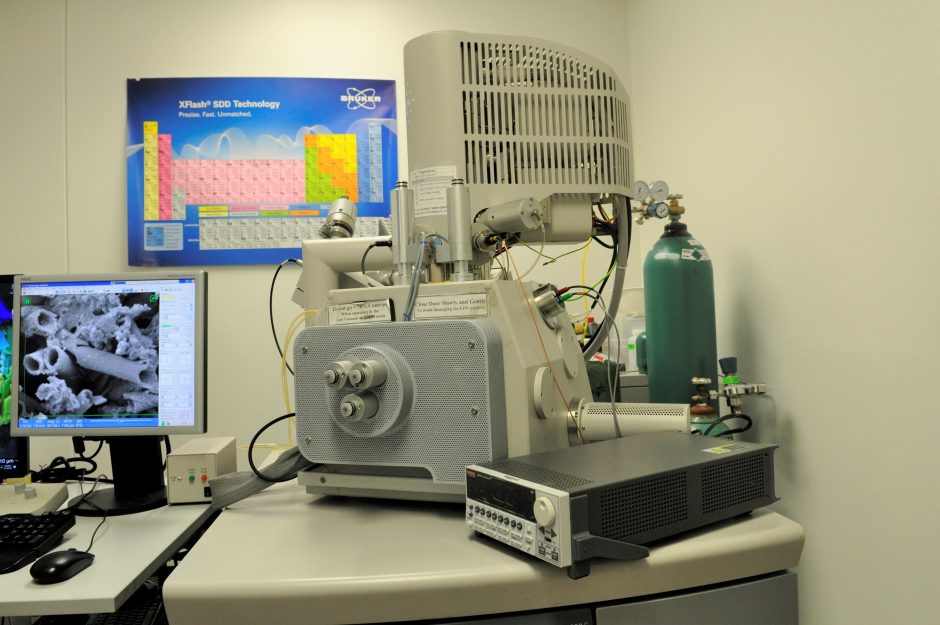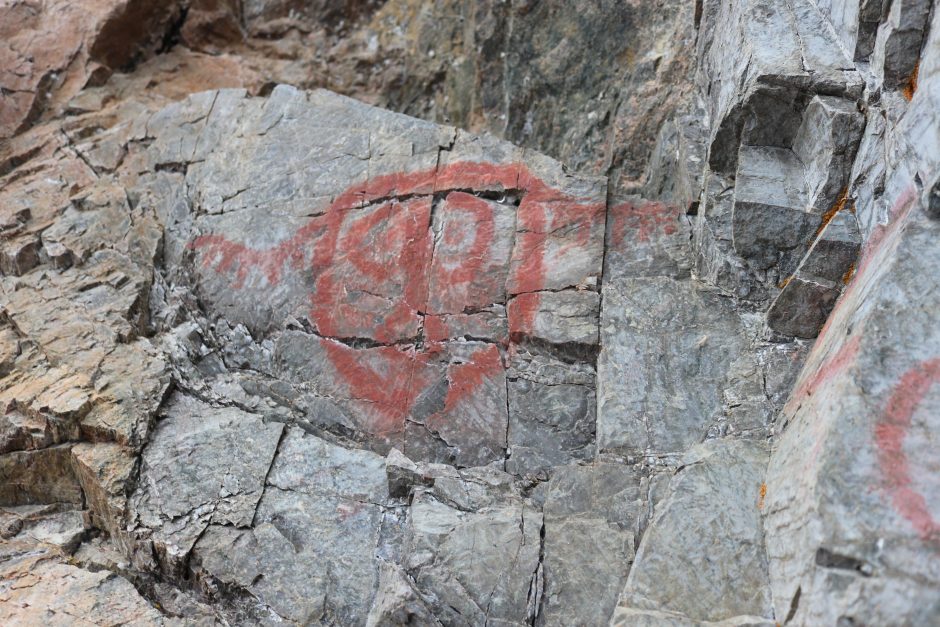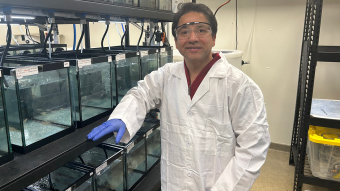Nov. 19, 2019
Contact: Eric Stann, 573-882-3346, StannE@missouri.edu

Ochre, one of Earth’s oldest naturally occurring materials, was often used as a vivid red paint in ancient rock art known as pictographs across the world. Despite its broad use throughout human history and a modern focus on how the artistic symbolism is interpreted, little research exists on the paint itself and how it was produced.
Now, scientists led by Brandi MacDonald at the University of Missouri are using archaeological science to understand how ochre paint was created by hunter-gatherers in North America to produce rock art located at Babine Lake in British Columbia. The study was published in Scientific Reports, a journal of Nature.
“Ochre is one of the only types of material that people have continually used for over 200,000 years, if not longer,” said MacDonald, who specializes in ancient pigments. “Therefore, we have a deep history in the archeological record of humans selecting and engaging with this material, but few people study how it’s actually made.”
This is the first study of the rock art at Babine Lake. It shows that individuals who prepared the ochre paints harvested an aquatic, iron-rich bacteria out of the lake — in the form of an orange-brown sediment.
In the study, the scientists used modern technology, including the ability to heat a single grain of ochre and watch the effects of temperature change under an electron microscope at MU’s Electron Microscopy Core facility. They determined that individuals at Babine Lake deliberately heated this bacteria to a temperature range of approximately 750°C to 850°C to initiate the color transformation.

“It’s common to think about the production of red paint as people collecting red rocks and crushing them up,” MacDonald said. “Here, with the help of multiple scientific methods, we were able to reconstruct the approximate temperature at which the people at Babine Lake were deliberately heating this biogenic paint over open-hearth fires. So, this wasn’t a transformation done by chance with nature. Today, engineers are spending a lot of money trying to determine how to produce highly thermo-stable paints for ceramic manufacturing or aerospace engineering without much known success, yet we’ve found that hunter-gatherers had already discovered a successful way to do this long ago.”

MacDonald also collaborated with scientists and engineers at Bigelow Laboratory for Ocean Sciences, University of Arizona, University of Northern British Columbia and her alma mater, McMaster University, for help with this technical reconstruction.
The study, “Hunter-gatherers harvested and heated microbial biogenic iron oxides to produce rock art pigment,” was published in Scientific Reports, a journal of Nature. MacDonald is an assistant research professor in the Archaeometry Laboratory at the University of Missouri Research Reactor (MURR) who also holds a joint appointment in the Department of Anthropology at the College of Arts and Science. Co-authors include David Stalla, Matt Maschmann, Tommi White and Xiaoqing He at MU; Farid Rahemtulla at the University of Northern British Columbia; David Emerson at the Bigelow Laboratory for Ocean Sciences; Paul Dube at the Brockhouse Institute for Materials Research; and Catherine Klesner at the University of Arizona. The authors would like to acknowledge the permission and support of the descendant Lake Babine Nation, upon whose traditional territory the rock art resides.

Funding was provided by two National Science Foundation grants, a NASA Exobiology grant, an Office of Naval Research grant and a University of Missouri “Excellence in Electron Microscopy Award.” The content is solely the responsibility of the authors and does not necessarily represent the official views of the funding agencies.



